Though best known for conquering England in 1066, the Norman dynasty also changed the course of history throughout Europe. Furthermore, the Normans’ ability to assimilate into other cultures is still found today in the languages we speak and the laws that govern our daily lives.
That said, here are some interesting tidbits about how they rose to prominence as well as some other facts they probably would have wanted to stay buried.
8. Norse Men
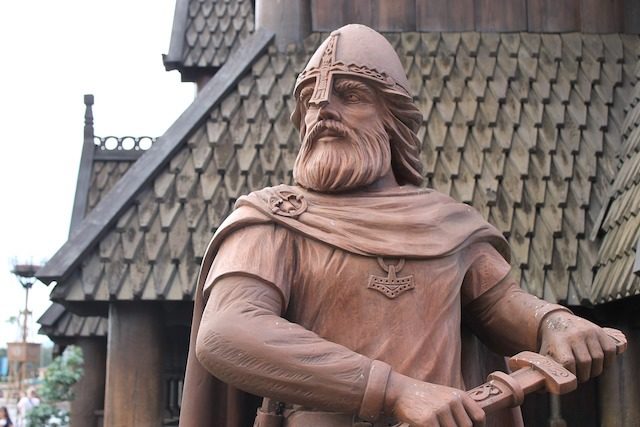
Dating as far back as the 8th century, bands of Vikings from Scandinavia launched frequent raids on coastal settlements in the Frankish Kingdom (now France). These fierce warriors left behind a trail of destruction, pillaging and plundering as they pleased. Eventually, the Franks had enough — and offered the invaders a lucrative bribe to knock it off.
King Charles III (“Charles the Simple”) issued the Treaty of St. Clair-sur-Epte in 911 CE, ceding a chunk of land around the mouth of the Seine River. The newcomers rapidly expanded their borders while steadily increasing their political clout.
The disgruntled locals referred to them as ‘Normans‘ — named for the point on the compass from which they came. The same ‘Normandy’ region later became the site of another major historical event when Allied troops in WWII landed on its beaches during Operation Overlord — better known as D-Day.
7. Family Feud
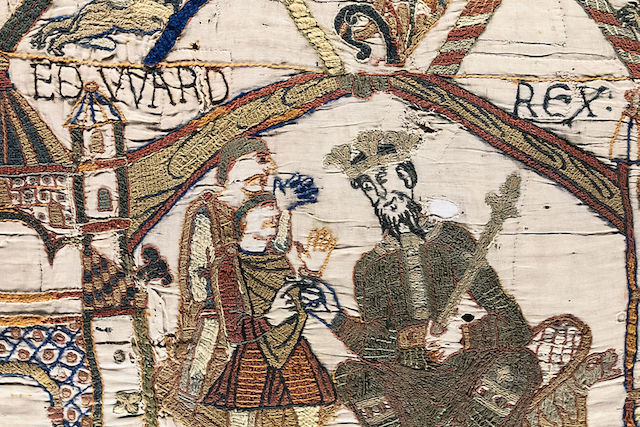
On January 5, 1066, the Anglo-Saxon King Edward the Confessor (named for his piety) died without an heir to England’s throne. This set off a frantic scramble to seize power, culminating with the Battle of Hastings that same year.
Although accounts vary, Edward allegedly promised to make Duke William II of Normandy his rightful successor. However, on his deathbed, Edward granted the kingdom instead to the Earl of Wessex, Harold Godwinson. The new king then took the name Harold II.
Adding to the free-for-all, Harold’s younger brother, Tostig, also wanted the crown, as did King Harald III of Norway. The Scandinavian monarch hoped to restore the North Sea Empire, previously held by King Cnut — a once-mighty ruler despite the unfortunate anagram. But in the end, William defeated all comers, thus earning his immortal nickname as the ‘Conqueror.’
6. Battle of Battle
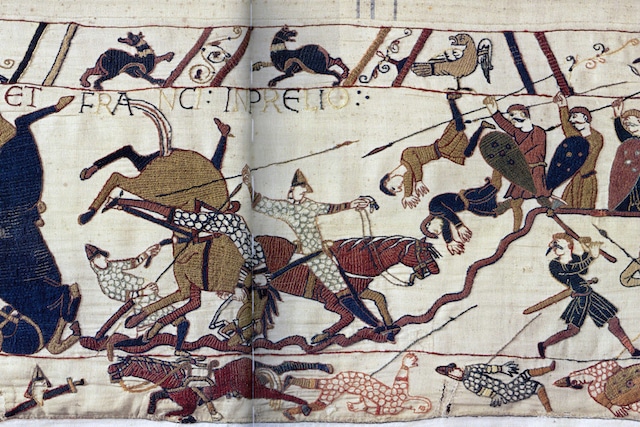
The Battle of Hastings, the most significant clash ever fought on British soil, took place on October 14, 1066 in southeast England. However, the actual fighting occurred in the village of Battle, located approximately seven miles inland from the seaport of Hastings.
With approximately 7,000 troops and cavalry, William sailed across the English Channel in longships, first landing at Pevensey in Sussex. He then squared off against forces led by Harold II, resulting in a full day of bloody carnage as hacked off limbs and fallen horses piled up on both sides. Eventually, the Normans outlasted the Anglo-Saxons — fighting which saw Harold killed after being shot in the eye with an arrow.
Afterward, the victors built an abbey to mark the site in Battle, which still stands today. The Anglo-Saxon Chronicle, a collection of historical annals, states: “on the very spot where God granted him the victory, he caused a great abbey to be built.”
5. Every Picture Tells A Story
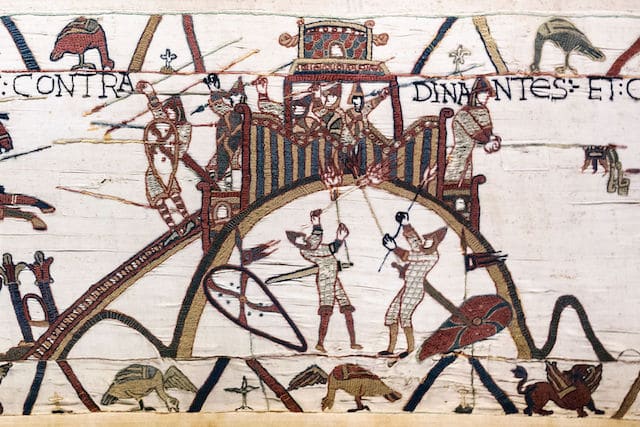
Following their conquest of England, the Normans commemorated the event with an elaborate work of art known as the Bayeux Tapestry. The surviving masterpiece is a stunning example of Norman Romanesque craftsmanship, even though it’s actually an embroidery and not a tapestry, which is traditionally woven by hand on a loom.
The project was most likely commissioned by Bishop Odo, William the Conqueror’s half-brother, for his cathedral in Bayeux. Measuring nearly 70 meters (229 feet) long, the ‘tapestry’ consists of nine separate linen panels stitched together.
According to the museum in Bayeux, where it’s permanently displayed, the embroidery also features Latin inscriptions and depicts 58 scenes which “tells the story of the events surrounding the conquest of England by the Duke of Normandy.”
Over the years, scholars have debated the historical accuracy portrayed in the pictorial narrative. Nonetheless, the artifact provides a rich source of information, reflecting the Normans’ military, social and cultural history.
4. Construction Boom
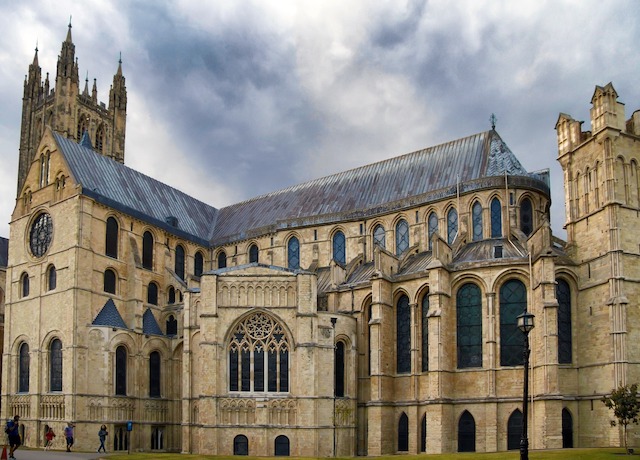
The Norman invasion brought many transformational changes throughout England. This makeover included the building of abbeys using a new architectural style called ‘Romanesque’. They also rebuilt ancient churches such as Canterbury Cathedral, employing similar methods found in other Norman occupied lands in Europe.
Before the conquest, the Anglo-Saxons had built only a handful of defensive outposts across England and Wales. This soon changed as Norman castles began popping up across Britain. By the time of William’s death in 1087, around 500 fortifications had been built.
These structures were initially constructed using mainly earth and timber, a style called motte-and-bailey. Norman architects later transitioned to building with sturdier materials such as stone, including the legendary Tower of London.
3. Death and Taxes
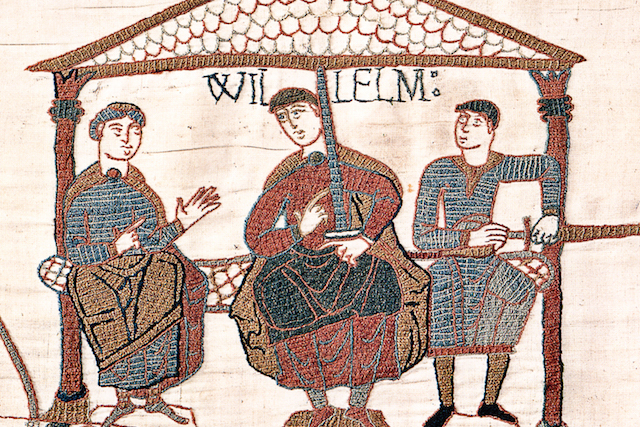
Until the fateful year of 1066, the only absolute certainty Anglo-Saxon men and women faced was death. But thanks to William the Conqueror, paying taxes would be added to that must-do list.
Today, the Domesday Book (a metaphor for the day of judgment) remains one of the oldest legal documents in Britain. As the new landlord of England, Norman officials conducted an extensive survey to assess the population’s value and resources. This published record was then used to collect taxes, which became a crucial element in the government’s feudal system.
It’s also worth noting that before conquering England, William had been born as the illegitimate son of Duke Robert I of Normandy. Technically speaking, that makes him “William the Bastard” — a sobriquet favored by cheeky Britons, who didn’t appreciate forking over their hard-earned quid to a foreign ruler.
2. Sinners and Saints
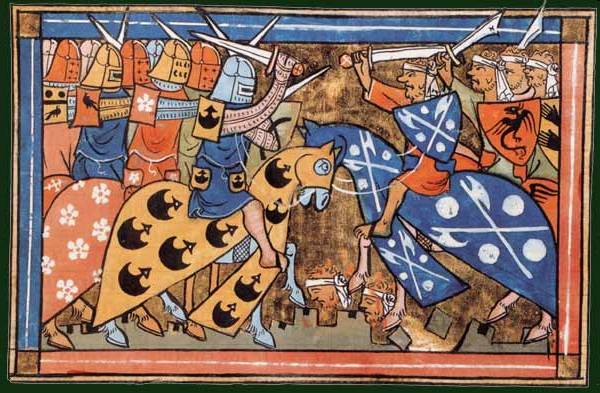
Having been spawned from Pagan origins and owning a reputation for murder and mayhem, the Normans sought redemption by helping spread Christianity far and wide. Beginning in the late 11th century, they actively engaged in a series of armed expeditions that came to be known as the Crusades.
On November 27, 1095, Pope Urban II implored all Christians to embark on a mission to reclaim Jerusalem’s holy city from Muslim forces. The Pontiff even promised absolution and remission of sins for anyone willing to kill and plunder the enemy while serving God. Naturally, the Normans jumped at the chance.
The First Crusade began in August of 1096 with an army consisting of multi-national soldiers throughout the European continent. Over the next three years, Norman soldiers helped slaughter hundreds of men, women, and children before victoriously marching into Jerusalem in 1099.
1. Lingering Legacy
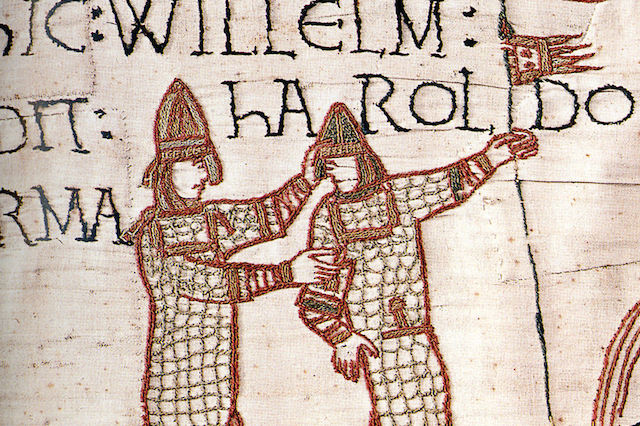
Although feared when he was alive, William didn’t receive much respect following his death in 1087. In fact, before the body was even cold, a power struggle quickly ensued among his sons, setting off a chain of events resembling a Monty Python sketch.
While fighting rival forces in France, William suffered a mortal injury after being thrown onto his saddle pommel. He then died shortly later at the priory of St Gervais near Rouen. His corpse was taken by boat for burial in Caen, where he had requested to be buried at the Abbaye-aux-Hommes, a grand cathedral he founded in 1063.
When the funeral procession arrived in Caen, a fire broke out, resulting in utter chaos. The turbulent day continued when an incensed heckler disrupted the burial ceremony, loudly complaining that the church had been built on his father’s property without compensation. The dispute led to a round of feverish haggling, after which the aggrieved man received an undisclosed payment.
Finally, clergy officials placed William inside an ornate tomb. But that’s not how the story ends. It gets worse. Much worse. At this stage, the monarch’s bloated, decaying body wouldn’t fit inside his stone sarcophagus. And when the monks tried using force, William’s swollen bowels suddenly burst asunder, producing a foul stench that sent the congregation fleeing for the exits.